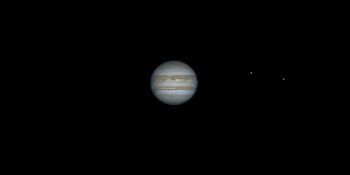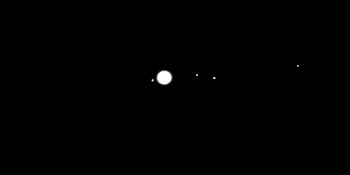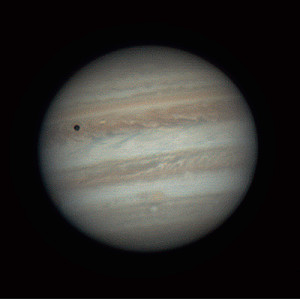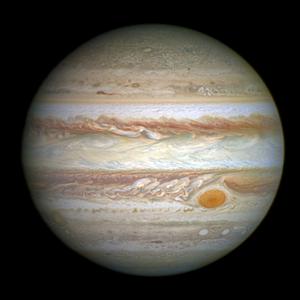Glossarbegriffe: Äußere Planeten
Description: Die äußeren Planeten in unserem Sonnensystem sind Jupiter, Saturn, Uranus und Neptun. Ihre Umlaufbahnen befinden sich außerhalb des Asteroidengürtels zwischen Mars und Jupiter. Alle äußeren Planeten sind sogenannte Riesenplaneten mit einer extrem dichten Atmosphäre, die hauptsächlich aus Wasserstoff besteht. Dadurch unterscheiden sie sich physisch von den inneren Planeten, die jeweils vergleichsweise kleine Gesteinsplaneten mit einer vergleichsweise dünnen Atmosphäre sind.
Planeten um andere Sterne als unsere Sonne lassen sich nicht unbedingt in innere und äußere Gruppen mit ähnlichen Merkmalen einteilen. Von einer Reihe von Sternen ist bekannt, dass sie mindestens einen Gasriesen haben: einen "heißen Jupiter" in enger Umlaufbahn.
Zugehörige Glossarbegriffe:
See this term in other languages
Term and definition status: The original definition of this term in English have been approved by a research astronomer and a teacher The translation of this term and its definition is still awaiting approval
The OAE Multilingual Glossary is a project of the IAU Office of Astronomy for Education (OAE) in collaboration with the IAU Office of Astronomy Outreach (OAO). The terms and definitions were chosen, written and reviewed by a collective effort from the OAE, the OAE Centers and Nodes, the OAE National Astronomy Education Coordinators (NAECs) and other volunteers. You can find a full list of credits here. All glossary terms and their definitions are released under a Creative Commons CC BY-4.0 license and should be credited to "IAU OAE".
If you notice a factual or translation error in this glossary term or definition then please get in touch.
Zugehörige Medien
Jupiter's Rotation, by Vishal Sharma, India
Bildnachweis: Vishal Sharma/IAU OAE
License: CC-BY-4.0 Creative Commons Namensnennung 4.0 International (CC BY 4.0) icons
Jupiter Moons Movie2, by Nicolas Hurez, Paul-Antoine Matrangolo, and Carl Pennypacker, United States of America
Bildnachweis: Nicolas Hurez, Paul-Antoine Matrangolo and Carl Pennypacker/IAU OAE
License: CC-BY-4.0 Creative Commons Namensnennung 4.0 International (CC BY 4.0) icons
Jupiter, Io and its shadow, by Ralf Burkart, Germany
Bildnachweis: Ralf Burkart/IAU OAE
License: CC-BY-4.0 Creative Commons Namensnennung 4.0 International (CC BY 4.0) icons
Jupiter
Bildnachweis: NASA, ESA, and A. Simon (Goddard Space Flight Center) credit link
License: CC-BY-4.0 Creative Commons Namensnennung 4.0 International (CC BY 4.0) icons
Saturn
Bildnachweis: NASA, ESA, A. Simon (Goddard Space Flight Center), and M.H. Wong (University of California, Berkeley) credit link
License: CC-BY-4.0 Creative Commons Namensnennung 4.0 International (CC BY 4.0) icons













